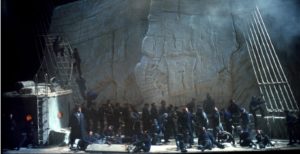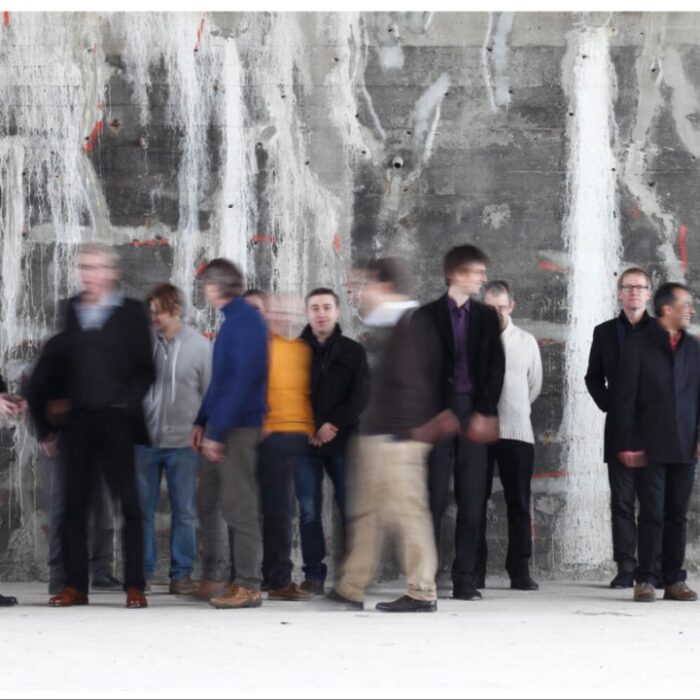
Metropolitan Opera 2016-17 Preview: ‘Der Fliegende Holländer’s’ History Marked By 10-Year Breaks
By David SalazarWagner’s first masterpiece “Der Fliegende Holländer” returns to the Metropolitan Opera on Tuesday, April 25 after a seven-year absence. Despite being well-known throughout the opera world, “The Flying Dutchman,” as translated in English, has had a rather interesting history at the Met marked by long hiatuses.
The opera opened the 1889-1890 season in its first-ever performance. The cast that included Theodore Reichmann as the Dutch, Sophie Wiesner as Senta, Paul Kalisch as Erik and Emil Fischer as Daland. It would get five performances in New York that year before getting another two in Boston and Chicago.
The opera would return in 1890-91 for four performances. A single performance would materialize in the 1892 season. Reichmann would take on the title role for the first 11 performances of the opera throughout these three seasons.
After a seven-year absence, the opera would return on Dec. 13, 1899, and would then get another four performances that season with Theodore Bertram as the tortured captain.
Another six-year hiatus would ensue for the opera and it would return for just four performances during 1907-1908.
And then it would disappear from the repertory for decades.
Revival
A new production by Wilhelm Von Wymetal would revive the early Wagner work in 1930, with a cast that included Maria Jeritza and Friedrich Schorr as the two leads. Artur Bodanzky conducted. The opera got regular performances throughout the 1930s, 18 in total with Schorr as the leading man in all of them.
Kirsten Flagstad also appeared in eight of those performances to close out the decade and sang two to finish off the 1939-40 season.
Then another 10-year absence ensued until the opera was revived in 1950 in a production by Herbert Graf. Hans Hotter was the leading man, making his debut in the opera alongside Astrid Varnay. He would be the opera’s main raison d’être for that revival.
Another revival did not come until 1960 when George London, Leonie Rysanek, Karl Lieb and Giorgio Tozzi joined forces. London and Rysanek would become the driving forces behind the opera’s status at the house over the ensuing decade as London took on the title role 21 times between 1960 and 1965 and Rysanek appeared 32 times as Senta between 1960-70.
10 Years Later
After them, you guessed, another hiatus ensued and it lasted 10 years. James Levine, José van Dam, and Donald McIntyre were the driving forces behind the revival, but its 10 performances were the only ones for 10 years. Jean-Pierre Ponnelle also directed a new production of the opera.
Another 10 Years Later
In 1989, the work returned in yet another new production by August Everding with James Morris as the Dutchman and Levine in the pit. Eleven performances ensued. The success of that initial run saw the opera return in 1992 with Morris in the lead role and Hildegard Behrens as Senta. The cast also included Mignon Dunn, Paul Groves and Matti Salminen with James Conlon in the pit.
The two leads of Morris and Behrens returned for another run in 1994, this one made up of five performances.
Nina Stemme would make her Met Opera debut as Senta in 2000 with Morris yet again in the title role and Valery Gergiev as the maestro. This would be Morris’ final run as the title character, which he played 30 times at the Met.
And 10 Years Later
After yet another 10-year hiatus, Juhu Usitalo and Deborah Voigt would lead the last revival of the opera for seven performances.
This season’s cast will star Michael Volle, Amber Wagner, AJ Glueckert, Ben Bliss, Franz-Josef Selig and Dolora Zajick. Future Met Artistic Director Yannick Nézet-Séguin will conduct Wagner at the Met for the first time in his career.
Categories
News

